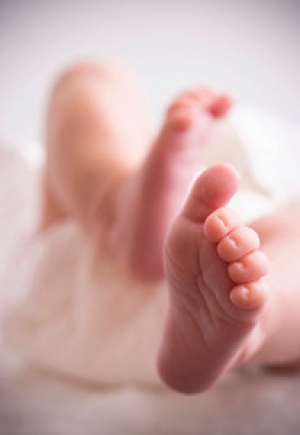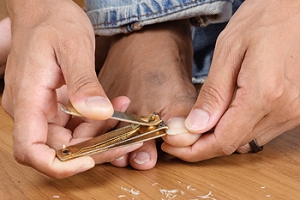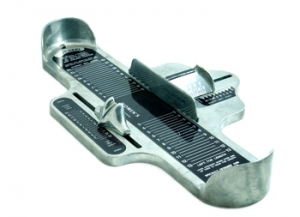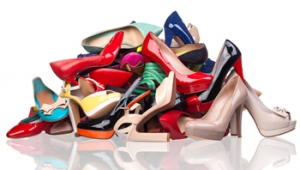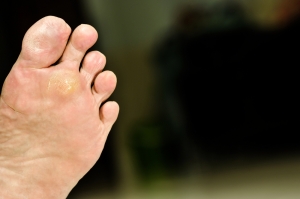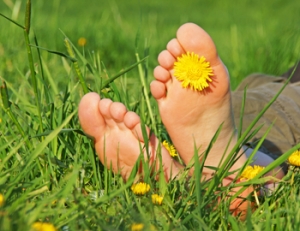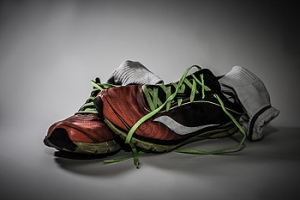Super User
Treating Your Child’s Ingrown Toenail
 When it comes to caring for your child’s feet, it’s important you look for symptoms of any existing or developing foot conditions. One common condition that can develop among babies and young children is an ingrown toenail. Ingrown toenails are characterized by a toenail that grows into the skin on the side of the toe, often appearing red and swollen. Typically, it is more common that the big toe is affected by this condition. In more severe cases, a white or yellowish liquid may drain from the affected toe, which normally is a sign that an infection in present. To help prevent this condition from afflicting your child’s toes, it’s recommended that you make sure you’re cutting their toenails straight across and that they wear footwear that is not too constricting or tightly fitted. Ingrown toenails are often quite painful and should be treated with professional care. For a safe recovery, and to avoid the development of an infection, we suggest you consult with a podiatrist as soon as possible to treat your child’s ingrown toenail.
When it comes to caring for your child’s feet, it’s important you look for symptoms of any existing or developing foot conditions. One common condition that can develop among babies and young children is an ingrown toenail. Ingrown toenails are characterized by a toenail that grows into the skin on the side of the toe, often appearing red and swollen. Typically, it is more common that the big toe is affected by this condition. In more severe cases, a white or yellowish liquid may drain from the affected toe, which normally is a sign that an infection in present. To help prevent this condition from afflicting your child’s toes, it’s recommended that you make sure you’re cutting their toenails straight across and that they wear footwear that is not too constricting or tightly fitted. Ingrown toenails are often quite painful and should be treated with professional care. For a safe recovery, and to avoid the development of an infection, we suggest you consult with a podiatrist as soon as possible to treat your child’s ingrown toenail.
Making sure that your children maintain good foot health is very important as they grow. If you have any questions, contact Dr. John Branwell of Kearny, New Jersey. Our doctor can provide the care you need to keep you pain-free and on your feet.
Keeping Children's Feet Healthy
Having healthy feet during childhood can help prevent medical problems later in life, namely in the back and legs. As children grow, their feet require different types of care. Here are some things to consider...
Although babies do not walk yet, it is still very important to take care of their feet.
Avoid putting tight shoes or socks on his or her feet.
Allow the baby to stretch and kick his or her feet to feel comfortable.
As a toddler, kids are now on the move and begin to develop differently. At this age, toddlers are getting a feel for walking, so don’t be alarmed if your toddler is unsteady or ‘walks funny’.
As your child gets older, it is important to teach them how to take care of their feet.
Show them proper hygiene to prevent infections such as fungus.
Be watchful for any pain or injury.
Have all injuries checked by a doctor as soon as possible.
Comfortable, protective shoes should always be worn, especially at play.
If you have any questions please feel free to contact our office located in Kearny, NJ . We offer the newest diagnostic and treatment technologies for all your foot and ankle needs.
Why Do I Have an Ingrown Toenail?
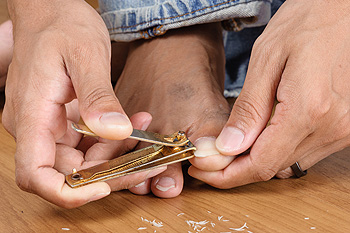 When the toenail grows into the flesh instead of over it, it is referred to as an ingrown toenail. The big toe is usually the most common to become affected. This condition can be particularly painful and may lead to an infection if left untreated. To help prevent an ingrown toenail, it is recommended that you trim the toenails properly, which is straight across, not on a curve or following the shape of your toe. Additionally, toenails should not be trimmed too short. Symptoms associated with ingrown toenails generally include swelling and redness around the affected area. Additionally, for more severe cases, you may notice bleeding or oozing of pus, which can be an indication that an infection has developed. To safely treat an ingrown toenail it is suggested that you consult with a podiatrist.
When the toenail grows into the flesh instead of over it, it is referred to as an ingrown toenail. The big toe is usually the most common to become affected. This condition can be particularly painful and may lead to an infection if left untreated. To help prevent an ingrown toenail, it is recommended that you trim the toenails properly, which is straight across, not on a curve or following the shape of your toe. Additionally, toenails should not be trimmed too short. Symptoms associated with ingrown toenails generally include swelling and redness around the affected area. Additionally, for more severe cases, you may notice bleeding or oozing of pus, which can be an indication that an infection has developed. To safely treat an ingrown toenail it is suggested that you consult with a podiatrist.
Ingrown toenails may initially present themselves as a minor discomfort, but they may progress into an infection in the skin without proper treatment. For more information about ingrown toenails, contact Dr. John Branwell of Kearny, New Jersey. Our doctor can provide the care you need to keep you pain-free and on your feet.
Ingrown Toenails
Ingrown toenails are caused when the corner or side of a toenail grows into the soft flesh surrounding it. They often result in redness, swelling, pain, and in some cases, infection. This condition typically affects the big toe and may recur if it is not treated properly.
Causes
- Improper toenail trimming
- Genetics
- Improper shoe fitting
- Injury from pedicures or nail picking
- Abnormal gait
- Poor hygiene
You are more likely to develop an ingrown toenail if you are obese, have diabetes, arthritis, or have any fungal infection in your nails. Additionally, people who have foot or toe deformities are at a higher risk of developing an ingrown toenail.
Symptoms
Some symptoms of ingrown toenails are redness, swelling, and pain. In rare cases, there may be a yellowish drainage coming from the nail.
Treatment
Ignoring an ingrown toenail can have serious complications. Infections of the nail border can progress to a deeper soft-tissue infection, which can then turn into a bone infection. You should always speak with your podiatrist if you suspect you have an ingrown toenail, especially if you have diabetes or poor circulation.
If you have any questions, please feel free to contact our office located in Kearny, NJ . We offer the newest diagnostic and treatment technologies for all your foot care needs.
Simple Stretches That Can Help Your Feet
 People who regularly stretch their feet are often aware of the benefits that can come from frequently practicing foot stretches. An effective way to stretch the Achilles tendon is done by standing on a step, and gently lowering one foot at a time. The big toe can be stretched by grasping the heel while sitting down, and slowly bending the big toe toward you. Additionally, this is helpful in stretching the sole of the foot. The toes can become stronger when a towel curl stretch is performed. This is practiced by placing your foot on a towel, and gently grabbing it with your toes. For more information about the benefits of stretching the feet, please schedule an appointment with a podiatrist.
People who regularly stretch their feet are often aware of the benefits that can come from frequently practicing foot stretches. An effective way to stretch the Achilles tendon is done by standing on a step, and gently lowering one foot at a time. The big toe can be stretched by grasping the heel while sitting down, and slowly bending the big toe toward you. Additionally, this is helpful in stretching the sole of the foot. The toes can become stronger when a towel curl stretch is performed. This is practiced by placing your foot on a towel, and gently grabbing it with your toes. For more information about the benefits of stretching the feet, please schedule an appointment with a podiatrist.
Stretching the feet is a great way to prevent injuries. If you have any concerns with your feet consult with Dr. John Branwell from Kearny, New Jersey. Our doctor will assess your condition and provide you with quality foot and ankle treatment.
Stretching the Feet
Stretching the muscles in the foot is an important part in any physical activity. Feet that are tight can lead to less flexibility and make you more prone to injury. One of the most common forms of foot pain, plantar fasciitis, can be stretched out to help ease the pain. Stretching can not only ease pain from plantar fasciitis but also prevent it as well. However, it is important to see a podiatrist first if stretching is right for you. Podiatrists can also recommend other ways to stretch your feet. Once you know whether stretching is right for you, here are some excellent stretches you can do.
- Using a foam roller or any cylindrical object (a water bottle or soda can will do), roll the object under your foot back and forth. You should also exert pressure on the object. Be sure to do this to both feet for a minute. Do this exercise three times each.
- Similar to the previous one, take a ball, such as a tennis ball, and roll it under your foot while seated and exert pressure on it.
- Grab a resistance band or towel and take a seat. If you are using a towel, fold it length wise. Next put either one between the ball of your foot and heel and pull with both hands on each side towards you. Hold this for 15 seconds and then switch feet. Do this three times for each foot.
- Finally hold your big toe while crossing one leg over the other. Pull the toe towards you and hold for 15 seconds. Once again do this three times per foot.
It is best to go easy when first stretching your foot and work your way up. If your foot starts hurting, stop exercising and ice and rest the foot. It is advised to then see a podiatrist for help.
If you have any questions, please feel free to contact our office located in Kearny, NJ . We offer the newest diagnostic and treatment technologies for all your foot care needs.
Tips and Tricks for Purchasing Childrens Footwear
 There are many children who enjoy participating in activities that include running. It is beneficial for parents to take certain steps that can ensure their child wears running shoes that fit properly. Measuring both feet, purchasing shoes at the end of the day, and lacing each shoe correctly, are all factors that should be implemented when trying on athletic footwear. It is also important that the shoes have adequate room for the toes to move freely in, which may be helpful in preventing unwanted foot conditions. Additionally, the socks that will be worn with the shoes will help in determining a proper fit. If you would like more information about how to make sure your child’s running shoes fit correctly, please consult with a podiatrist.
There are many children who enjoy participating in activities that include running. It is beneficial for parents to take certain steps that can ensure their child wears running shoes that fit properly. Measuring both feet, purchasing shoes at the end of the day, and lacing each shoe correctly, are all factors that should be implemented when trying on athletic footwear. It is also important that the shoes have adequate room for the toes to move freely in, which may be helpful in preventing unwanted foot conditions. Additionally, the socks that will be worn with the shoes will help in determining a proper fit. If you would like more information about how to make sure your child’s running shoes fit correctly, please consult with a podiatrist.
Finding a properly-fitting shoe is important in reducing injuries and preventing foot problems. For more information about treatment, contact Dr. John Branwell from Kearny, New Jersey. Our doctor will treat your foot and ankle needs.
Proper Shoe Fitting
A common concern when it comes to foot health, having properly fitted shoes can help prevent injuries to the foot. Out feet affect our posture and gait, which in turn affects the biomechanics and overall bodily structure. With 33 joints, 26 bones, and over 100 ligaments, the potential for serious injury is much greater than one realizes. Although the feet cease growth in adulthood, they still change shape as they mature. Here are some factors to consider when it comes to investing in proper fitting shoes:
- Be sure the shoes fit correctly right away
- Ensure the ball of your foot fits comfortably in the widest portion of the shoes
- Even though they may look fashionable, improper fitting shoes can either create adverse conditions or exacerbate existing ones you may already have
- Walk along a carpeted surface to ensure the shoes comfortably fit during normal activity
Keeping in mind how shoes fit the biomechanics of your body, properly-fitting shoes are vitally important. Fortunately, it is not difficult to acquire footwear that fits correctly. Be sure to wear shoes that support the overall structure of your body. Do your feet a favor and invest in several pairs of well-fitted shoes today.
If you have any questions please feel free to contact our office located in Kearny, NJ . We offer the newest diagnostic and treatment technologies for all your foot and ankle needs.
Can Foot Conditions Be Caused From Wearing High Heels?
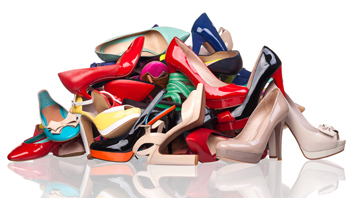 Research has indicated that when high heels are worn frequently, damage may be done to the feet. The calf muscles may become shorter, which may cause Achilles tendon injuries. Additionally, uncomfortable foot conditions may develop as a result of inadequate room in the front of the shoe for yur toes. These can include bunions, hammertoes, corns, and blisters. Many women balance the desire to wear high heels by alternating with shoes that have a lower heel. Additionally, falling may be prevented when specific foot and ankle stretches are practiced, which can help the overall foot to become stronger. If you would like more information about how the feet are impacted by high heels, it is suggested that you consult with a podiatrist.
Research has indicated that when high heels are worn frequently, damage may be done to the feet. The calf muscles may become shorter, which may cause Achilles tendon injuries. Additionally, uncomfortable foot conditions may develop as a result of inadequate room in the front of the shoe for yur toes. These can include bunions, hammertoes, corns, and blisters. Many women balance the desire to wear high heels by alternating with shoes that have a lower heel. Additionally, falling may be prevented when specific foot and ankle stretches are practiced, which can help the overall foot to become stronger. If you would like more information about how the feet are impacted by high heels, it is suggested that you consult with a podiatrist.
High heels have a history of causing foot and ankle problems. If you have any concerns about your feet or ankles, contact Dr. John Branwell from Kearny, New Jersey. Our doctor can provide the care you need to keep you pain-free and on your feet.
Effects of High Heels on the Feet
High heels are popular shoes among women because of their many styles and societal appeal. Despite this, high heels can still cause many health problems if worn too frequently.
Which Parts of My Body Will Be Affected by High Heels?
- Ankle Joints
- Achilles Tendon – May shorten and stiffen with prolonged wear
- Balls of the Feet
- Knees – Heels cause the knees to bend constantly, creating stress on them
- Back – They decrease the spine’s ability to absorb shock, which may lead to back pain. The vertebrae of the lower back may compress.
What Kinds of Foot Problems Can Develop from Wearing High Heels?
- Corns
- Calluses
- Hammertoe
- Bunions
- Morton’s Neuroma
- Plantar Fasciitis
How Can I Still Wear High Heels and Maintain Foot Health?
If you want to wear high heeled shoes, make sure that you are not wearing them every day, as this will help prevent long term physical problems. Try wearing thicker heels as opposed to stilettos to distribute weight more evenly across the feet. Always make sure you are wearing the proper shoes for the right occasion, such as sneakers for exercising. If you walk to work, try carrying your heels with you and changing into them once you arrive at work. Adding inserts to your heels can help cushion your feet and absorb shock. Full foot inserts or metatarsal pads are available.
If you have any questions please feel free to contact our office located in Kearny, NJ . We offer the newest diagnostic and treatment technologies for all your foot and ankle needs.
Effect of High Heels on the Feet
High heels are uncomfortable, but many women sacrifice comfort to be stylish. There are many problems that stem from wearing high heels, however these issues can be avoided by wearing proper shoes.
Heels are bad because they push your weight forward toward the fall of the foot. The higher the heel is, the more weight and pressure get shifted. This process causes the back to hyperextend backwards to counterbalance which may cause pain in the leg, hip, and back. Consequently, major posture problems may occur, and these issues may eventually become permanent.
Wearing high heels is one of the leading cause of ingrown toenails. Heels create a great deal of pressure on the big toenails which disrupts proper toenail growth. This may eventually lead to the big toenail growing into the skin. Another common problem that stems from high heels is bunions. If bunions go untreated, they can cause serious scar tissue to form along with severe pain.
However, there are ways to minimize the harmful risks associated with wearing heels. You should try to massage and stretch your legs and feet after wearing heels for an extended time. Stretching helps prevent the Achilles tendons and calf muscles from becoming too tight. A good substitute for heels are platforms which provide a better surface area to evenly distribute the body’s weight.
If you are experiencing any painful foot conditions from wearing high heels, you should consult with your podiatrist right away.
What Symptoms are Associated With a Foot Corn?
 A foot corn can be characterized as a thickened area of the skin that is tender to the touch, and often takes a circular shape. Corns will likely form on the bottom or side of the foot because of excessive pressure, often due to ill-fitting footwear. Along with tenderness, other symptoms include foot pain and overall discomfort of the foot. It may help to put a bandage or pad over the corn to reduce irritation and prevent further friction. The affected area may also become dry and cause the skin to flake as well. To help treat a foot corn, please visit a podiatrist for professional care and treatment.
A foot corn can be characterized as a thickened area of the skin that is tender to the touch, and often takes a circular shape. Corns will likely form on the bottom or side of the foot because of excessive pressure, often due to ill-fitting footwear. Along with tenderness, other symptoms include foot pain and overall discomfort of the foot. It may help to put a bandage or pad over the corn to reduce irritation and prevent further friction. The affected area may also become dry and cause the skin to flake as well. To help treat a foot corn, please visit a podiatrist for professional care and treatment.
If you have any concerns regarding your feet and ankles, contact Dr. John Branwell of Kearny, New Jersey. Our doctor will treat your foot and ankle needs.
Corns: What Are They? and How Do You Get Rid of Them?
Corns can be described as areas of the skin that have thickened to the point of becoming painful or irritating. They are often layers and layers of the skin that have become dry and rough, and are normally smaller than calluses.
Ways to Prevent Corns
There are many ways to get rid of painful corns such as wearing:
- Well-fitting socks
- Comfortable shoes that are not tight around your foot
- Shoes that offer support
Treating Corns
Treatment of corns involves removing the dead skin that has built up in the specific area of the foot. Consult with Our doctor to determine the best treatment option for your case of corns.
If you have any questions please feel free to contact our office located in Kearny, NJ . We offer the newest diagnostic and treatment technologies for all your foot and ankle needs.
Understanding Corns and Calluses
Corns and Calluses are both hardened layers of thickened skin that develop because of friction. Both ailments are typically found on the feet and may be unsightly. Although they have similarities, corns and calluses are different from each other.
Some causes of corns and calluses may be wearing ill-fitting shoes and not wearing socks. If you wear tight shoes, your feet will constantly be forced to rub against the shoes, causing friction. If you fail to wear socks, you are also causing your feet to endure excess friction.
There are some signs that may help you determine whether you have one of these two conditions. The first symptom is a thick, rough area of skin. Another common symptom is a hardened, raised bump on the foot. You may also experience tenderness or pain under the skin in addition to flaky, dry, or waxy skin.
There are also risk factors that may make someone more prone to developing corns and calluses. If you are already dealing with bunions or hammertoe, you may be more vulnerable to having corns and calluses as well. Other risk factors are foot deformities such as bone spurs, which can cause constant rubbing inside the shoe.
Corns tend to be smaller than calluses and they usually have a hard center surrounded by inflamed skin. They also tend to develop on the parts of the body that don’t bear as much weight such as the tops and sides of toes. Corns may also be painful for those who have them. On the other hand, calluses are rarely painful. These tend to develop on the bottom of the feet and may vary in size and shape.
Fortunately, most people only need treatment for corns and calluses if they are experiencing discomfort. At home treatments for corns and calluses should be avoided, because they will likely lead to infection. If you have either of these ailments it is advised that you consult with your podiatrist to determine the best treatment option for you.
Proper Foot Care for Diabetic Patients
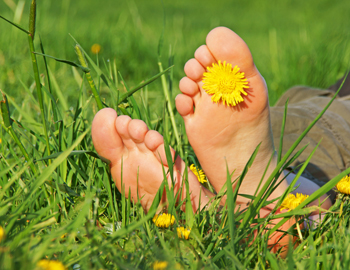 Patients who have diabetes are generally aware of the importance of maintaining proper foot care. There are specific types of foot conditions that diabetic patients can be prone to. These can include neuropathy, foot deformities, and poor circulation. Neuropathy can cause the inability to feel sensations in the feet, or the feet may tingle. It may be difficult to feel a wound, cut, or bruise if this condition develops. Poor circulation can cause a slower healing response to existing infections and cuts. It is beneficial to ensure blood sugar levels are controlled, in addition to inspecting the feet on a daily basis. Applying a good moisturizer may help the feet to remain smooth, and this can possibly prevent cracked heels and calluses from developing. If you have diabetes, it is strongly suggested that you are under the care of a podiatrist who can help you manage this condition.
Patients who have diabetes are generally aware of the importance of maintaining proper foot care. There are specific types of foot conditions that diabetic patients can be prone to. These can include neuropathy, foot deformities, and poor circulation. Neuropathy can cause the inability to feel sensations in the feet, or the feet may tingle. It may be difficult to feel a wound, cut, or bruise if this condition develops. Poor circulation can cause a slower healing response to existing infections and cuts. It is beneficial to ensure blood sugar levels are controlled, in addition to inspecting the feet on a daily basis. Applying a good moisturizer may help the feet to remain smooth, and this can possibly prevent cracked heels and calluses from developing. If you have diabetes, it is strongly suggested that you are under the care of a podiatrist who can help you manage this condition.
Diabetic foot care is important in preventing foot ailments such as ulcers. If you are suffering from diabetes or have any other concerns about your feet, contact Dr. John Branwell from Kearny, New Jersey. Our doctor can provide the care you need to keep you pain-free and on your feet.
Diabetic Foot Care
Diabetes affects millions of people every year. The condition can damage blood vessels in many parts of the body, especially the feet. Because of this, taking care of your feet is essential if you have diabetes, and having a podiatrist help monitor your foot health is highly recommended.
The Importance of Caring for Your Feet
- Routinely inspect your feet for bruises or sores.
- Wear socks that fit your feet comfortably.
- Wear comfortable shoes that provide adequate support.
Patients with diabetes should have their doctor monitor their blood levels, as blood sugar levels play such a huge role in diabetic care. Monitoring these levels on a regular basis is highly advised.
It is always best to inform your healthcare professional of any concerns you may have regarding your feet, especially for diabetic patients. Early treatment and routine foot examinations are keys to maintaining proper health, especially because severe complications can arise if proper treatment is not applied.
If you have any questions please feel free to contact our office located in Kearny, NJ . We offer the newest diagnostic and treatment technologies for all your foot and ankle needs.
How Proper Shoes Help Prevent Blisters
 Blisters can be uncomfortable and painful, and properly fitting shoes are one of the most important steps in preventing them. Shoes that are too small can cause pressure against the foot leading to the development of blisters. Shoes that are too big allow the foot to slide around inside the shoe, also causing friction. Shoes should be the proper length for your foot and there should be about a thumb’s width between the longest toe and the end of the shoe. Shoes should also be the proper width as well, meaning that the foot is not hanging over the side of the sole, and that the shoe can properly tighten. While properly fitted shoes may not completely eliminate blisters, they can help minimize their formation. If you are still experiencing blisters, please consult with a podiatrist to see what treatment options are correct for you.
Blisters can be uncomfortable and painful, and properly fitting shoes are one of the most important steps in preventing them. Shoes that are too small can cause pressure against the foot leading to the development of blisters. Shoes that are too big allow the foot to slide around inside the shoe, also causing friction. Shoes should be the proper length for your foot and there should be about a thumb’s width between the longest toe and the end of the shoe. Shoes should also be the proper width as well, meaning that the foot is not hanging over the side of the sole, and that the shoe can properly tighten. While properly fitted shoes may not completely eliminate blisters, they can help minimize their formation. If you are still experiencing blisters, please consult with a podiatrist to see what treatment options are correct for you.
It is important to find shoes that fit you properly in order to avoid a variety of different foot problems. For more information about treatment, contact Dr. John Branwell from Kearny, New Jersey. Our doctor will treat your foot and ankle needs.
Proper Shoe Fitting
Shoes have many different functions. They cushion our body weight, protect our feet, and allow us to safely play sports. You should always make sure that the shoes you wear fit you properly in order to avoid injuries and deformities such as: bunions, corns, calluses, hammertoes, plantar fasciitis, stress fractures, and more. It is important to note that although a certain pair of shoes might be a great fit for someone else, that doesn’t mean they will be a great fit for you. This is why you should always try on shoes before buying them to make sure they are worth the investment. Typically, shoes need to be replaced ever six months to one year of regular use.
Tips for Proper Shoe Fitting
- Select a shoe that is shaped like your foot
- Don’t buy shoes that fit too tight, expecting them to stretch to fit
- Make sure there is enough space (3/8” to ½”) for your longest toe at the end of each shoe when you are standing up
- Walk in the shoes to make sure they fit and feel right
- Don’t select shoes by the size marked inside the shoe, but by how the shoe fits your foot
The shoes you buy should always feel as good as they look. Shoes that fit properly will last longer, feel better, and improve your way of life each day.
If you have any questions, please feel free to contact our office located in Kearny, NJ . We offer the newest diagnostic and treatment technologies for all your foot care needs.
